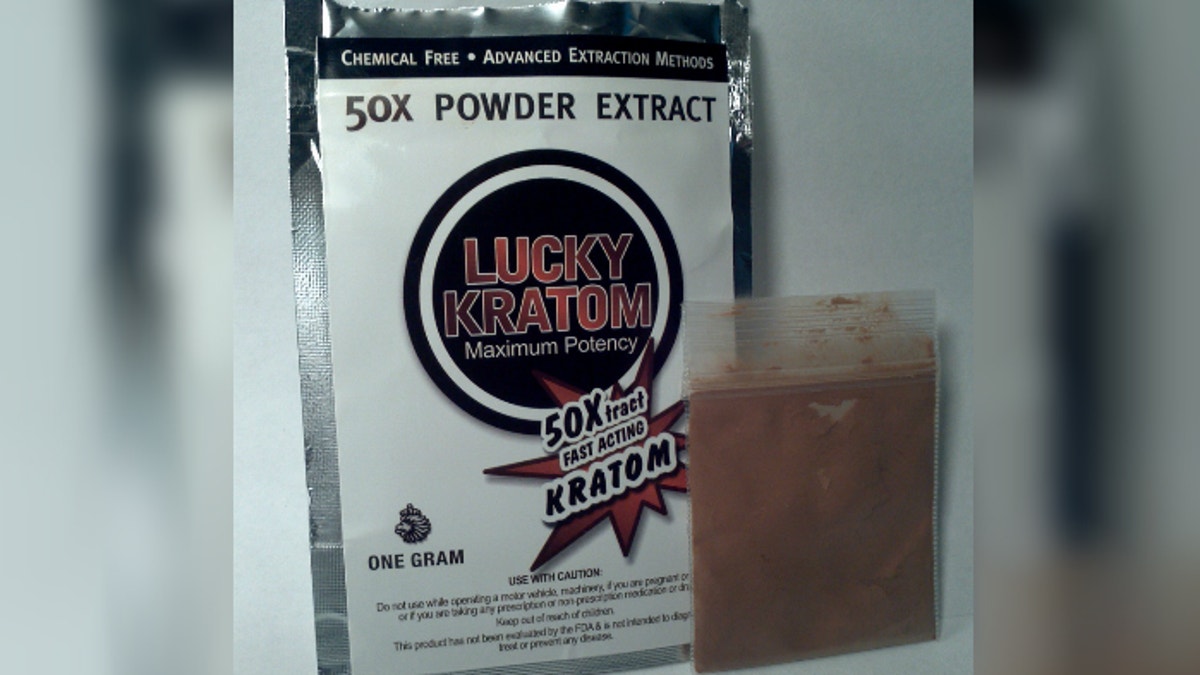
The latest plant to bliss out users and worry law enforcement officials is kratom, a Southeast Asian tree related to coffee, the leaves of which are chewed to produce a pleasant buzz. Indigenous to Thailand and Malaysia, kratom (Mitragyna speciosa) is making its way into parties, festivals, kava bars and a variety of places where aficionados are employing it to get high. In Thailand, kratom leaves are typically chewed fresh, cutting out the fibrous central vein. Dried leaves are often crushed up or powdered and mixed with fruit juice.
First described in an 1839 publication by Dutch botanist Pieter Willem Korthals, kratom is used as a traditional medicine to reduce pain, as an anti-diarrheal, and as way of reducing opiate dependence. In the latter case, kratom leaves are chewed or consumed to decrease symptoms of opiate withdrawal. The plant also enjoys a legendary use for extending the duration of sexual intercourse.
The leaves of kratom contain mitragynine and several related alkaloids. Of all the compounds present in the leaf, mitragynine appears to be the most active and the one most likely responsible for kratom’s pleasing effects. Used as an opiate substitute, kratom contains no opiates of any kind, but it does bind to the same receptor sites in the brain. It binds to the mu-opioid receptor, as do both enkephalins and morphine. Additionally mitragynine binds to kappa-opioid receptors, which are associated with pain relief and sedation. Mitragynine is adrenergic, which produces a stimulating effect, and it also binds with serotonin receptors, producing an anti-depressant effect as well. Due to this multiplicity of activities in the brain, kratom produces an overall pleasing feeling.
As with all substances that modify mood, some agencies are in an uproar over kratom, even though it mostly enjoys a long history of safe use. Currently kratom is illegal in Thailand since the passing of Kratom Act 2486 in 1943, yet Thai officials are considering reversing the 70 year old ban on kratom, due to the plant’s value in weaning addicts off of opiates. Kratom is also illegal in Malaysia, Burma and Australia, and drug officials at the U.S. Drug Enforcement Administration (DEA) consider it a “drug of concern.” One kratom fatality was reported in the October 22, 2012 Journal of Forensic Science, but the person who died was also taking a prescription benzodiazepine anti-anxiety drug and cold medications. Thus the actual cause of that death remains unknown.
According to users, kratom produces a pleasant feeling that lasts longer than that of a cup of coffee and produces a sense of well being, moderate euphoria and alertness. Like all psychoactive substances, different dosages produce a range of effects. In general a small amount of kratom produces a feeling of mild stimulation and alertness, while a larger dose produces a feeling of sedation. Moderate kratom use does not appear to impair motor control or promote a tendency to violence.
Concerns regarding the potential for kratom habituation abound. Even pro kratom web sites caution users not to consume this plant every day, warning of a potential dependence. The DEA stated in a January 2013 publication:
“Kratom consumption can lead to addiction. In a study of Thai kratom addicts, it was observed that some addicts chewed kratom daily for 3 to 30 years (mean of 18.6 years). Long-term use of kratom produced anorexia, weight loss, insomnia, skin darkening, dry mouth, frequent urination, and constipation. A withdrawal syndrome was observed, consisting of symptoms of hostility, aggression, emotional lability, wet nose, achy muscles and bones, and jerky movement of the limbs. Furthermore, several cases of kratom psychosis were observed, where kratom addicts exhibited psychotic symptoms that included hallucinations, delusion and confusion.”
The Thai kratom users in the DEA citing were long term, heavy consumers. Most moderate users find the plant pleasant and experience no ill effects. Those who employ it heavily every day, however, may run into problems of dependence.
Since the beginning of recorded history, people have drunk, smoked, chewed, snorted, injected and otherwise consumed psychoactive agents of all types – for the purpose of modifying mood and state of mind. Some substances, like LSD, produce radical shifts in perception and cognitive function. Others, like coffee and cocoa, simply produce a pleasant feeling. . Kratom’s safety is still up for debate, but in the meantime, it is easily available on the Internet, under several brand names. It comes in some very lively designed packages and is also found at head shops. For now its legal status in the United States remains, due to a lack of reported problems with the plant. Still, the daily heavy user should beware.
